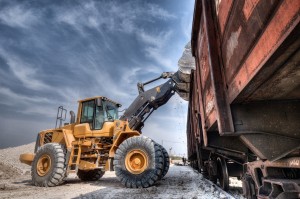
During 2012, the BLS reported an incidence rate for fatal injuries in the railroad industry more than twice as high as the incidence rate for fatal injuries in other industries. Specifically, in an industry employing approximately 300,000 workers, 15 work-related deaths were reported for the year.
In addition to the high incidence rate for fatal injuries, the railroad industry experienced a high volume of nonfatal injuries. The BLS reported 3,583 nonfatal injuries sustained by railroad workers in 2012. In the context of the population of railroad workers in the United States, the railroad industry incurred one injury for every 84 employees during the year.
Prevalence of hazards
The relatively high rate of both fatal and nonfatal injuries to railroad workers is a consequence of hazards on railroad worksites. High-speed motor vehicles, heavy objects and dangerous equipment, among other features of these worksites, increase vulnerability to injuries in this industry. According to the BLS, the most common types of injuries in the industry are as follows:
- Falling, given the prevalence of obstacles on worksites
- Loss of hearing, given loud noises on worksites
- Repetitive stress injuries, due to overexertion
Activities including driving or riding in trains and other construction-related motor vehicles pose risks through collisions and other events.
Federal benefits available
Railroad workers who incur injuries in Illinois may be entitled to workers’ compensation benefits under the Illinois Workers’ Compensation and Occupational Diseases Act. Claiming benefits under state law, possibly with the help of an attorney, can help injured railroad workers cover lost wages and medical costs.
Due to the high risks of injury and fatalities that result from working on railroads, the U.S. government has instituted benefits specific to workers in this industry. More than a century ago, Congress passed the Federal Employers Liability Act, which provides benefits to injured railroad workers beyond traditional workers’ compensation benefits.
Between FELA and traditional workers’ compensation, there are specific differences in the conditions of eligibility and the potential magnitude of benefits. Workers’ compensation in Illinois is based on a no-fault philosophy, which makes employer negligence legally indistinguishable from employee negligence or unavoidable accident. Under FELA, at least partial negligence on the part of the employer must be established. Furthermore, benefits through FELA may be higher in value than those awarded through workers’ compensation and may be awarded on the basis of pain and suffering.
Proceeding through the workers’ compensation process can be challenging for any injured worker. Given the potential for eligibility for benefits under FELA, this is especially the case for injured railroad workers. In order to successfully navigate both state law and federal law, injured railroad workers may wish to consult with a workers’ compensation attorney.
